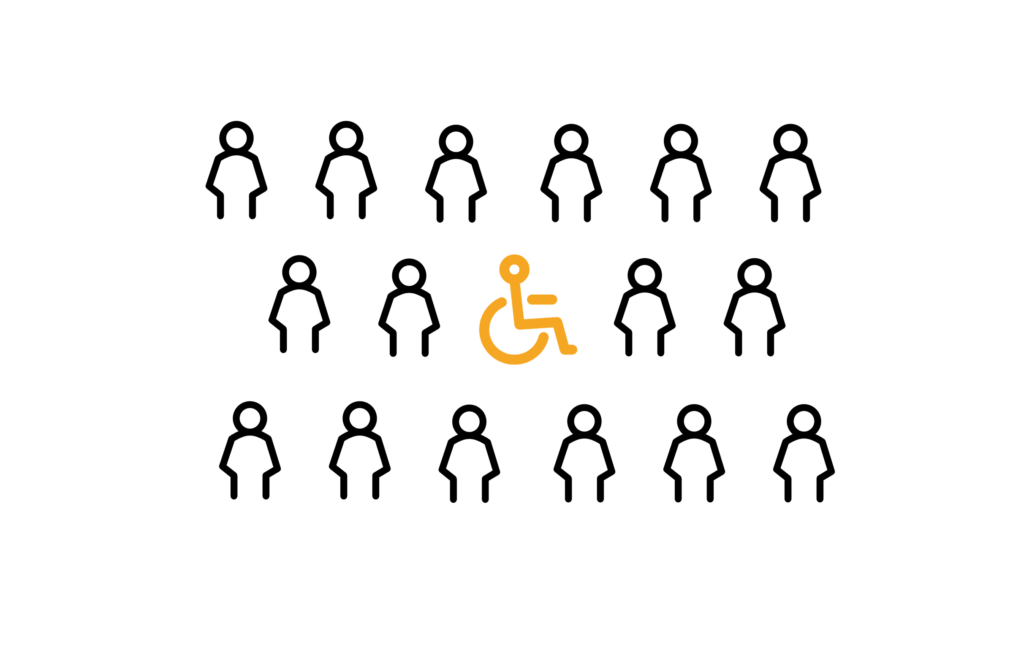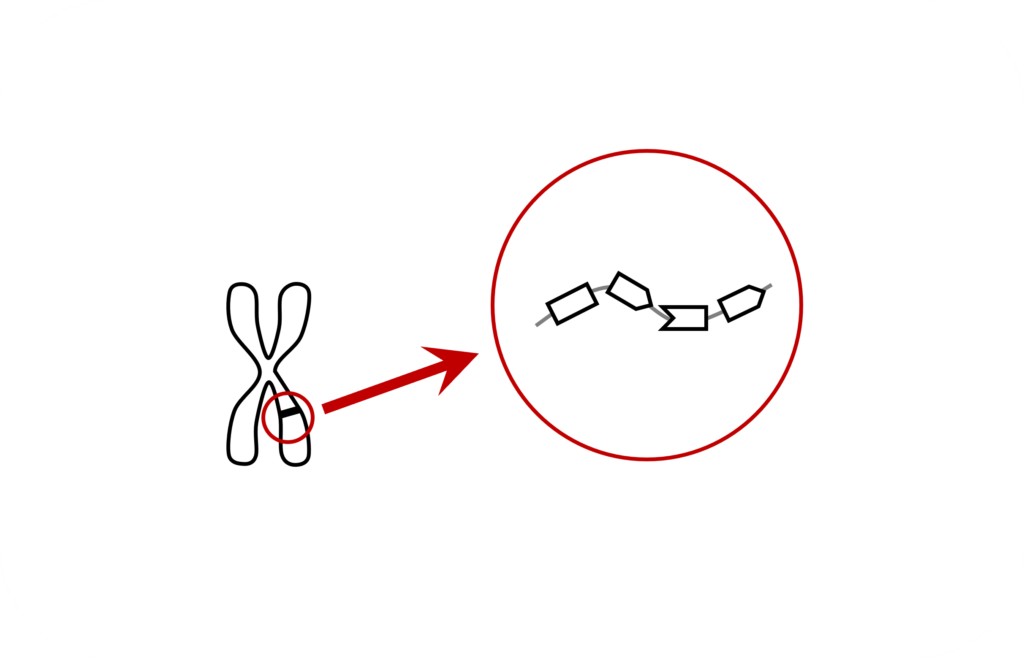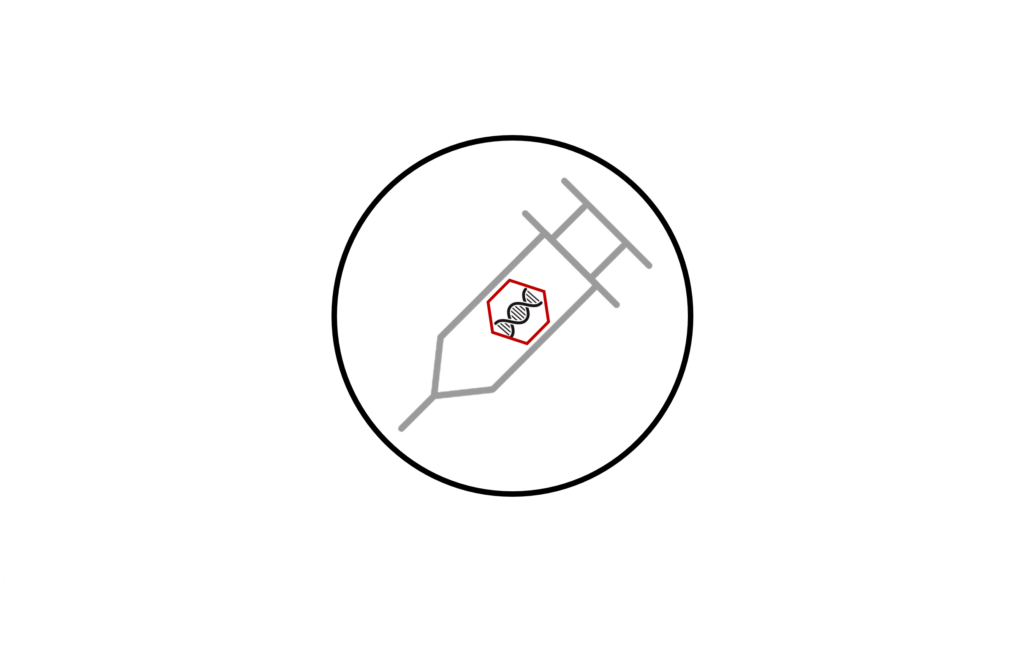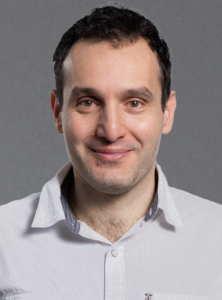Duchennemuscular dystrophy (DMD) is a severe, X-linked, progressive neuromuscular disease caused by mutations in the DMD gene. DMD impacts approximately one in 3500 to 5000 males born worldwide. Early symptoms manifest around the age of 1 , with loss of ambulation by the mean age of 12 and mean life expectancy of just 26 years. Until now, there is no cure for DMD.

Duchenne muscular dystrophy affects one individual among 3500-5000 new male birth. Although primarily an X-linked condition affecting males, some female carriers are symptomatic for the disorder but usually exhibit a milder phenotype. Large mutations in DMD gene are the major mutations in all territories

DMD gene is the longest known human gene, spanning over 2.4Mbp, accounting for approximately 1.4% of the X chromosome. It comprises 79 exons, with a coding region length of 11,058 bp. Dystrophin protein has several different isoforms. In heart and skeletal muscles, a 427kd dystrophin protein is the major isoform.

Base editing can precisely edit the bases on the mutated DMD gene and recover the DMD protein expression through exon skipping. Through repairing the DMD gene, base editor medicine can provide a cure for DMD therapy.

Senior pharmacology and toxicology advisor

Pharmacology, Shang University of Traditional Chinese Medicine.
Senior Vice General Manager at Shanghai InnoStar Biotechnology Co., Ltd.
More than 20 years in preclinical pharmacology and toxicology evaluation of new drugs.
Senior Scientific Advisor

Ph.D., Molecular Cell Biology and Bioengineering, Max Planck Research School.
Senior Director of genome engineering department, AstraZeneca, Gothenburg, Sweden.
More than 10 years’ experience in gene editing tool and drug development.
Senior Clinical Physician Advisor

Ph.D. , Peking Union Medical College, Tsinghua University.
Associate Chief physician. Neurology Department. Peking Union Medical College Hospital, Beijing.
Member of the Neurology Branch of the Chinese Medical Association.
Member of the DMD/BMD Study Group of the Chinese Rare Disease Alliance.
Specializes in complex and rare neurological disorders, gene diagnosis of monogenic.
Senior strategic Advisor

Over 30 years of experience in drug discovery, clinical translation, clinical practice, and operational management Former President of Chongqing Medical and Pharmaceutical College.
Ex-Vice President of the Technical Center at Fosun Pharma.
Senior Biostatistics Advisor

Ph.D. Biostatistics, University of Michigan, USA.
Bettyann Asche Murray Distinguished Professor, Deputy Chair.
Department of Biostatistics, University of Texas, MD Anderson Cancer Center.
Inventor of Bayesian Optimal lnterval PhaseⅠ/ⅡTrial Design (BOlN12); Participated in clinical trial design of many anti-cancer treatment.
Co-funder, Senior scientific Advisor

Ph.D. , Pathology, Ohio State University
Associate Professor at West Lake University, Young Scientist in the 973 Program
Thousand Youth Talents Program, National Outstanding Young Scientist
Inventor of Targeted AID-mediated Mutagenesis (TAM) base editor
CEO, Co-Founder

Ph.D. , Immunology, Shanghai Jiao Tong University.
MBA, Manchester Business School.
Over 20 years of experience in pharmaceutical industry, covering R&D, BD, Investment and Incubation.
Quality management advisor

Former Director of the Quality Assurance Department and Laboratory at the Shanghai Institute of Biological Products
Research and establishment of quality standards for various viral bioproducts as well as registration applications
Committee Member of the Chinese Pharmacopoeia Commission,
Expert Member of the Shanghai Science and Technology Commission
Committee Member of the Quality Management Committee of the Shanghai Medical Industry Association
Member of the New Technology/Skills Professional Committee.